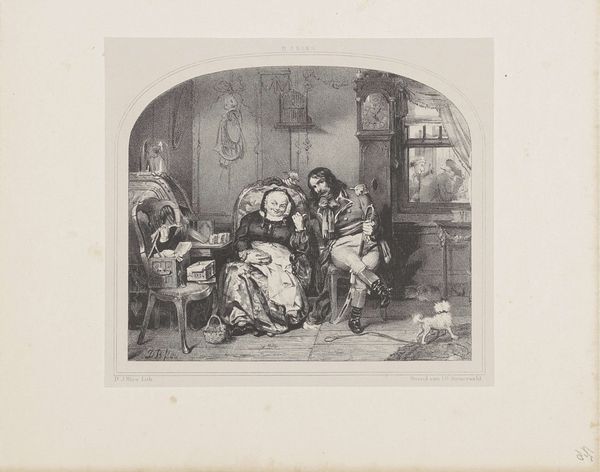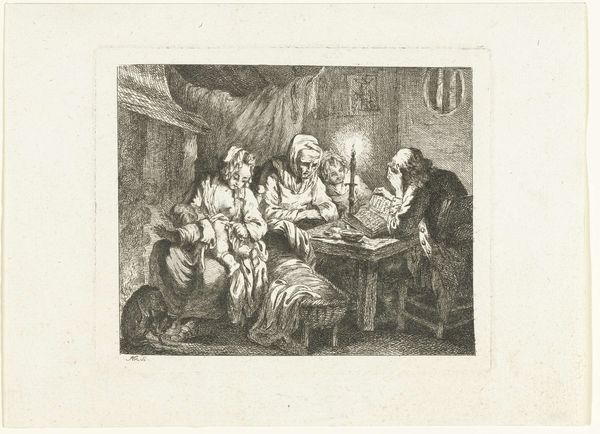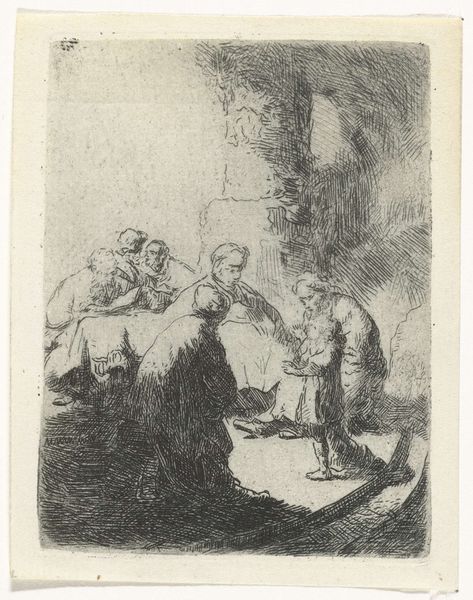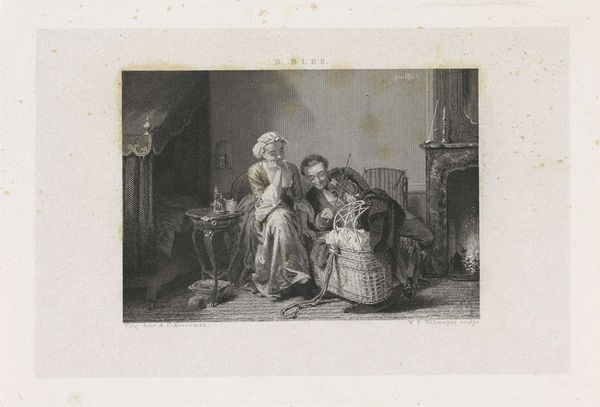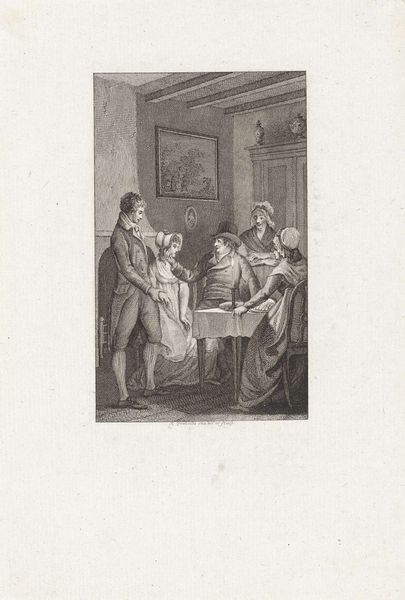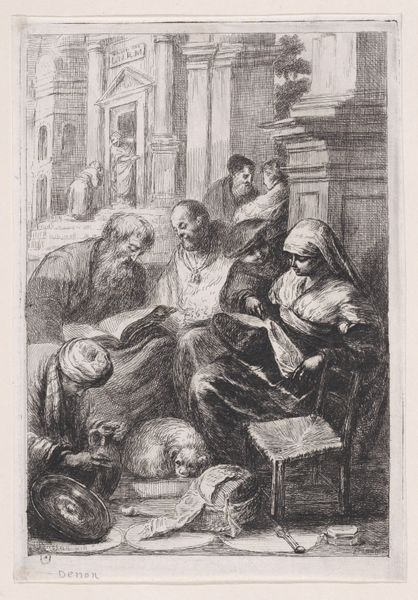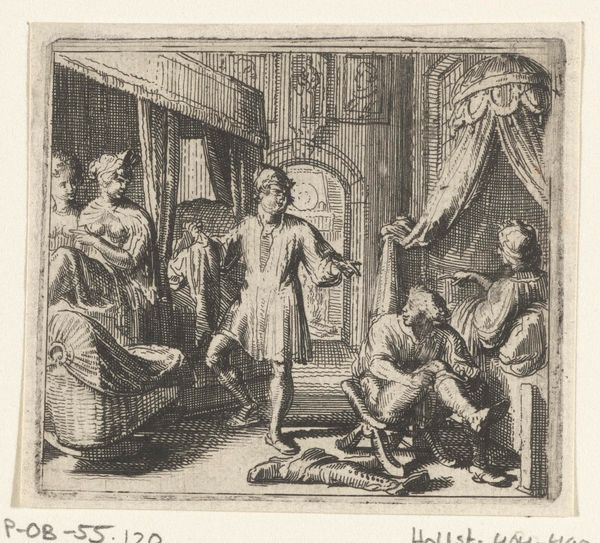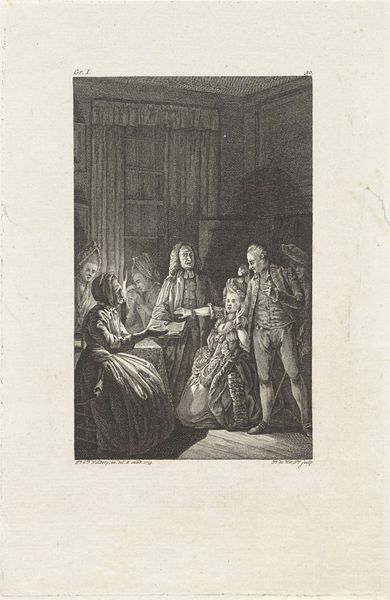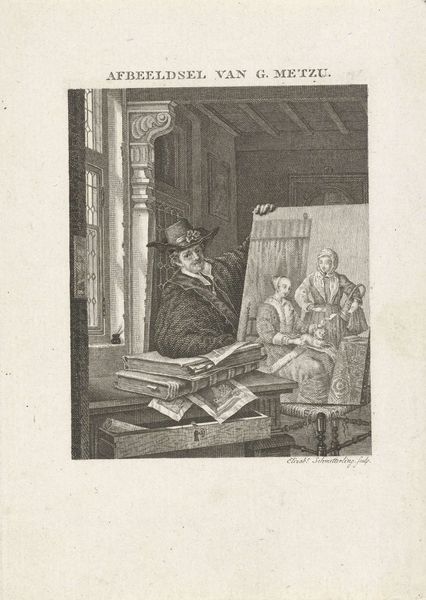
Dimensions: height 175 mm, width 125 mm
Copyright: Rijks Museum: Open Domain
Curator: Today we are looking at "Interieur met een luitspelende vrouw," or "Interior with a Lute Playing Woman," an 1837 print made with etching and ink by Henricus Wilhelmus Couwenberg, currently held at the Rijksmuseum. Editor: It's strikingly baroque. The textures created through etching invite you into this moment, but there is a formality created by the artist's technique. The lines feel deliberately etched in place. It also seems like the subjects within this "Interior" are very orderly, or posed, rather than truly enjoying the music. Curator: It reflects a fascination with genre paintings of the 17th century, where scenes of everyday life were common. These musical gatherings reflected status, learning, and a level of engagement with artistic expression available to the rising middle class, aspiring to be aristocratic. Editor: Note the details that focus your attention: the lute is positioned at the composition's center, catching and reflecting the soft light from the large leaded windows. Also, the tapestry-covered room-divider to the left provides a screen for another room—what's being hidden from us here? Is it the family's valuables or, indeed, perhaps more insight into their lives? Curator: Those objects are intended to elevate their social status. In post-Napoleonic Netherlands, there was interest in reflecting on the cultural achievements of the "Golden Age" and positioning it as part of their national identity. To display knowledge of it signaled cultivation. Editor: Still, if you abstract the image and forget its narrative for a moment, look at the clever ways Couwenberg directs the eye! Notice that although all figures face towards the central musician, that dark suited man to the right is looking towards something outside the pictorial space. The light itself guides the eye to that dark corner and globe, drawing me towards the possibility of leaving the room and opening this interior to the outer-world. Curator: That also illustrates a very specific moment in the cultural understanding of domesticity. Couwenberg offers viewers a sense of access to a space that would have been largely restricted to the owner's social class and intimates. These types of images allowed people in a growing industrialized economy to glimpse another world to aspire to. Editor: Ultimately, the technique elevates a simple domestic interior. As a result, viewers can explore and enter into what might otherwise be considered an ordinary subject, but for that striking and intriguing light that allows us to linger. Curator: Thank you for providing insights that gave us different things to consider, allowing us to imagine the domestic life and social stratification reflected here in the Rijksmuseum collection.
Comments
No comments
Be the first to comment and join the conversation on the ultimate creative platform.
